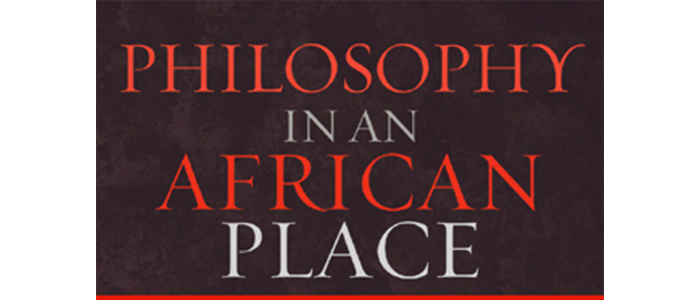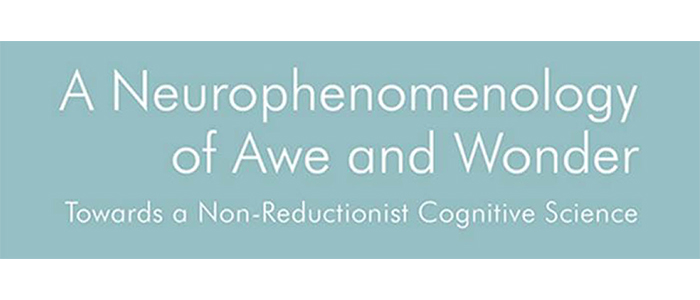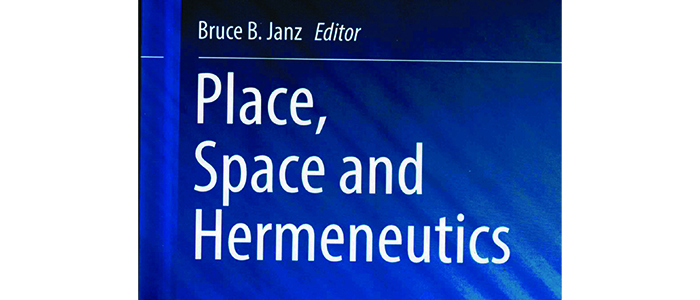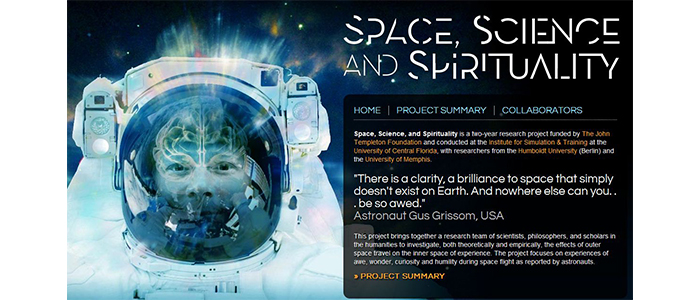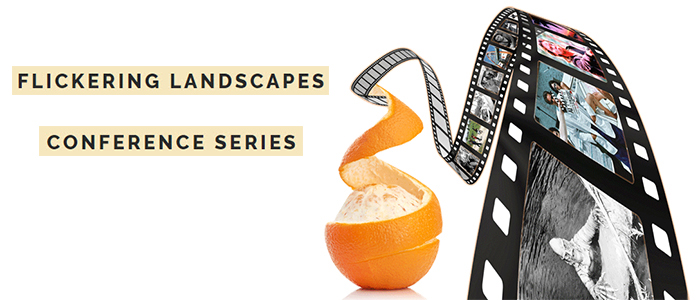Websites
- Disability and Geography Resource Site
- Generative Psychogeography
- Transforming Cultures – research project in Australia that “examines the composition of narratives, their circulation and frequent contestation within public culture.”
- Representing Space – non-places in advertising
- Rondo and the Building of I-94 – racial displacement by a highway project
- Sites of Memory: Landscapes of Race and Ideology
- Space and Fandom, Special Issue of Refractory: A Journal of Entertainment Media 31 March 2004
- Space, Cultural Studies, and Technology
- Spaces of Oppression Research Group
- Urban Postmodernism: Space
- Henri Lefebvre: Production of Space
- David Harvey: Compression of time and space
- Edward Soja: Spatialized Ontology and Methodology: Dialetic Materialism of Time and Space
- Foucault: heterotopia
- Doreen Massey: Politics and Space/Time
- Urban Semiotics
- Flaneur and Benjamin on Baudelaire’s flaneur, the urban nomads
- The Politics of Location
Journals
- Antipode
- Critical Inquiry
- Environment and Planning D-Society & Space
- European Journal of Cultural Studies
- International Review of Sociology
- PostModern Culture
- Progress in Human Geography
- Social & Cultural Geography
- Space and Culture
- Theory & Event
- XPC: Cross Cultural Poetics Web
- Street as Method (Winter 2004)
On-line Bibliographies
- Allen, Ricky Lee. An Annotated Bibliography of Critical Readings into Notions of Identity Represented by Various Educational, Social, and Cultural Theory Texts
- Disability and Geography Resource Site – Bibliography
- Cultural Landscapes Bibliography
- Geography and Masculinities (Lawrence Berg, Robyn Longhurst)
- A Spatial Cultural Bibliography (Paul O’Neill)
- People with a Disability and Tourism
Courses and Programs
- Analysing Space in the “Information Age” (Gillian Fuller & Ross Harley)
- Cultural Production of Space (Michael Uwemedimo, Stephen Clucas)
- Ethnicity and Place (Chin)
- MSc on Modernity, Place and Space (University College London) – with program prospectus
- Space and Representation (Sally Munt)
- Spatial Culture (MA Program, Middlesex University)
General Bibliography
Adam, Barbara. “Radiated Identities: In Pursuit of the Temporal Complexity of Conceptual Cultural Practices.” Featherstone, Mike & Scott Lash, eds. Spaces of Culture: City – Nation – World. Sage Publications, 1999: 138-158.
Aitken, Stuart C. and Leo E. Zonn, eds. Place, power, situation, and spectacle : a geography of film. Lanham, Md.: Rowman & Littlefield, 1994.
Allon, Fiona. “Nostalgia Unbound: Illegibility and the Synthetic Excess of Place.” Continuum: Journal of Media and Cultural Studies 14:3 (2000): 275-287.
Allor, Martin, Danielle Juteau & John Shepherd. “Contingencies of Culture: The Space of Culture in Canada and Québec. http://www.gu.edu.au/centre/cmp/6_1_03.html
Amith, Jonathan D. The Möbius Strip: A Spatial History of Colonial Society in Guerrero, Mexico. Stanford: Stanford University Press, 2005.
Anderson, K. 1993. “Aboriginal Redfern: constructions of race and place”. In Jackson, P. and Penrose, J. eds. Constructions of Race, Place, and Nation. London: University College London Press, 1993: 81-100.
Aoki, Keith. “Space Invaders: Critical Geography, The “Third World” in International Law and Critical Race Theory.” http://www.law.uoregon.edu/faculty/kaoki/site/articles/spaceinvaders.pdf
Aoki, Keith. “Race, Space, and Place: The Relation Between Architectural Modernism, Post-Modernism, Urban Planning, and Gentrification” Fordham Urban Legal Journal 699 (1993). http://www.law.uoregon.edu/faculty/kaoki/site/articles/racespaceplace.pdf
Apffel-Marglin-F. & Parajuli-P. “Geographies of difference and the resilience of ecological ethnicities: ‘place’ and the global motion of capital.” Development 41:2 (1998): 14-21.
Appadurai, Arjun. “The Production of Locality,” in Fardon, R., ed. Counterworks: Managing the Diversity of Knowledge, The Uses of Knowledge: Global and Local Relations. New York: Routledge, 1995: 204-225.
Arizpe, L. “The Politics of Place and the Power of the Weaker” Development 45:1 (March 2002): 22-24.
Bale, John. “Virtual Fandoms; Futurescapes of Football.” http://www.efdeportes.com/efd10/jbale.htm
Bale, John. “The Place of ‘Place’ in Cultural Studies of Sports.” Progress in Human Geography 12:4 (1988): 507-524.
Bale, John. Sport, Space, and the City. Blackburn Press, 1992.
Barcan, Ruth and Ian Buchanan. Imagining Australian Space: Cultural Studies and Spatial Inquiry. Nedlands: University of Western Australia Press (for the Centre for Studies in Australian Literature), 1999.
Bauder, H. “Culture in the labor market: segmentation theory and perspectives of place.” Progress in Human Geography 25:1 (March 2001): 37-52.
Benton, Michael, “Rhetorics of Place: The Importance of Public Spaces and Public Spheres” Michael Benton, Melissa Purdue, and G. Wesley Houp, eds. Reconstruction: Studies in Contemporary Culture 5:3 (Summer 2005) http://www.reconstruction.ws/053/benton.shtml
Bongie, Chris. Islands and Exiles: The Creole Identities of Post/Colonial Literature. Stanford: University Press, 1998.
Bourdieu, J. P. & N. Alsayyad, eds. Dwellings, Settlements and Traditions: Cross-Cultural Perspectives. Lanham, MD: University Press of America, 1989.
Boyarin, Jonathan. “Space, time, and the politics of memory.” In Remapping memory: the politics of timespace. J. Boyarin, ed. Minneapolis: University of Minnesota Press, 1994.
Boym, Svetlana. The Future of Nostalgia. New York: Basic Books, 2001.
Brah, A. Cartographies of Diaspora. London: Routledge, 1996.
Bray, David. Social Space and Governance in Urban China: The Danwei System from Origins to Reform. Stanford University Press, 2005.
Bridge, Gary. “Mapping the terrain of time – space compression: power networks in everyday life.” Environment and Planning D-Society & Space 15 (1997): 611-626.
Bube, Paul Custodio. “From Monoculture to Polyculture.” Vitek, William & Wes Jackson, eds. Rooted in the Land: Essays on Community and Place. New Haven: Yale University Press, 1996: 25-34.
Burgess, Jacquie and John Gold, eds. Geography, the Media and Popular Culture. London; Croom Helm, 1985.
Butler, Ruth & Sophia Bowlby. “Bodies and spaces: an exploration of disabled people’s experiences of public space.” Environment and Planning D-Society & Space 15 (1997): 411-433.
Laura Cain. “‘What the Hell Is a Tim Tam?’ Reducing the Space between Cultures through Electronic Publishing” http://www.media-culture.org.au/9811/timtam.html
Carney, George O., ed. Fast Food, Stock Cars, and Rock-n-Roll: Place and Space in American Pop Culture. Rowman & Littlefield, 1995.
Carter, Paul. “Spatial History.” in Ashcroft, Bill; Griffiths, Gareth; Tiffin, Helen, eds. The Post-Colonial Studies Reader. London: Routledge, 1995: 375-377.
Carter, Paul. Repressed Spaces: The Poetics of Agoraphobia. Consortium 2002.
Clapham, Christopher. “Controlling Space in Ethiopia” in James, Wendy, Donald I. Donham, Eisei Kurimoto, and Alessandro Triulzi, eds. Remapping Ethiopia: Socialism & After. University of Ohio Press & James Curry Press, 2002
Constant. “New Babylon.” http://www.notbored.org/new-babylon.html
Cox, Kevin R., ed. Spaces of Globalization: Reasserting the Power of the Local. NY: Guilford Press, 1997.
Cvetkovich, Ann, and Douglas Kellner, eds. Articulating the Global and the Local: Globalization and Cultural Studies. Boulder: Westview Press, 1997.
Davis, Wade. Shadows in the Sun: Essays on the Spirit of Place. Edmonton: Lone Pine Publishers, 1992.
Dear, Michael & Steven Flusty. “The Postmodern Urban Condition.” Featherstone, Mike & Scott Lash, eds. Spaces of Culture: City – Nation – World. Sage Publications, 1999: 64-85.
Debord, Guy. The Society of the Spectacle. http://www.huzzam.com/etext/debgsociespec/index.html
Delaney, David. “The Space that Race Makes.” The Professional Geographer 54:1 (2002): 6-14.
Dell’Orto, Alessandro. Place and Spirit in Taiwan Tudi Gong in the Stories, Strategies and Memories of Everyday Life. London & New York: Routledge, 2002.
Dominy, Michele. Calling the Station Home: Place and Identity in New Zealand’s High Country. Rowman & Littlefield, 2000.
Duncan, Garrett. “Space, Place and the Problematic of Race: Black Adolescent Discourse as Mediated Action.” The Journal of Negro Education 65:2 (Spring, 1996): 133-150.
Duncan, James & David Ley, eds. Place/Culture/Representation. New York: Routledge, 1993.
Durrheim, Kevin & John Dixon “The Role of Place and Metaphor in Racial Exclusion: South Africa’s Beaches as Sites of Shifting Racialization.” Ethnic and Racial Studies 24:3 (May 2001): 433-450.
Eicher, Joanne. Dress and Ethnicity: Change Across Space and Time. Palgrave Macmillan, 1999.
Esteva, Gustavo. Crafting a place in space: Experiences of peoples regeneration. http://www.pudel.uni-bremen.de/subjects/space/esteva_paper.PDF
Etlin, R. A. “Space, Stone, and Spirit: The Meaning of Place.” S. Goldring, ed. The Eight Technologies of Otherness. London: Routledge, 1997: 306-319.
Eyerman, Ron. “Moving Culture.” Featherstone, Mike & Scott Lash, eds. Spaces of Culture: City – Nation – World. Sage Publications, 1999: 116-137.
Featherstone, Mike & Scott Lash. Spaces of Culture: City, Nation, World. Sage Publications, 1999.
Fleming, Douglas K and Richard Roth. “Place in Advertising.” Geographical Review 81:3 (July 1991): 281-291.
Friedman, Jonathan. “The Hybridization of Roots and the Abhorrence of the Bush.” Featherstone, Mike & Scott Lash, eds. Spaces of Culture: City – Nation – World. Sage Publications, 1999: 230-256.
Friese, Heidrun & Peter Wagner. “Not all that is Solid Melts Into Air: Modernity and Contingency.” Featherstone, Mike & Scott Lash, eds. Spaces of Culture: City – Nation – World. Sage Publications, 1999: 101-115.
Forest, Benjamin. “West Hollywood as symbol: the significance of place in the construction of a gay identity.” Environment and Planning D: Society and Space 13 (1995): 133-157.
Fraim, John. “Battle of Symbols: Space vs. Place” http://www.symbolism.org/writing/books/bs/place/
Fraim, John. Symbolism of Place: The Hidden Context of Communication. http://www.symbolism.org/writing/books/sp/home.html
Frick, Inge. Through the Vanishing Point: A Reverie of Accessing Freedom from Language in the Space and Place of Radical Loss. MA Thesis, University of Maryland, Baltimore County. http://userpages.umbc.edu/~ifrick1/thesis.html
Gegeo, David Welchman. “Cultural Rupture and Indigeneity: The Challenge of (Re)visioning “Place” in the Pacific.” The Contemporary Pacific 13:2 (Fall 2001): 491ff.
Gesler, Wilbert & Robin A. Kearns. Culture/Place/Health. New York: Routledge, 2001.
Gier, Jean Vengua. “… to have come from someplace”: October Light, America Is in the Heart, and “Flip” Writing After the Third World Strikes” Hitting Critical Mass: A Journal of Asian American Cultural Criticism 2:2 (1995) http://ist-socrates.berkeley.edu/~critmass/v2n2/gier1.html
Ghani, Ashraf. “Space as an arena of represented practices: an interlocutor’s response to David Harvey’s ‘From space to place and back again'” In: Bird, Jon, Barry Curtis, Tim Putnam, George Robertson & Lisa Tickner, eds. Mapping the Futures. London: Routledge, 1993: 47-58.
Gleeson, Brendan. “A Place on Earth: Technology, Space, and Disability.” Journal of Urban Technology 5:1 (1 April 1998): 87-109.
Gleeson, Brendan. Geographies of disability. New York: Routledge, 1999.
Graverson, Rebecca. “Imagining Other Places: Cosmopolitanism and exotic fantasies in multicultural cities.” http://www.anthrobase.com/Txt/G/Graversen_R_01.htm
Gregory, Steven. Black Corona: Race and the Politics of Place in an Urban Community. Princeton, NJ: Princeton University Press, 1998.
Jones-Correa, Michael. “Review of Gregory, Steven. Black Corona: Race and the Politics of Place in an Urban Community. Journal of Political Ecology: Case Studies in History and Society 6 (1999) http://www.library.arizona.edu/ej/jpe/volume_6/correavol6.htm
Grossberg, Lawrence. “The Space of Culture, the Power of Space.” In The Postcolonial Question: Common Skies, Divided Horizons. Eds. Iain Chambers and Lidia Curti. London: Routledge, 1996: 169-188.
Grzegorczyk, Marzena. Private Topographies: Space, Subjectivity and Political Change in Modern Latin America. Palgrave Macmillan, 2005.
Gyssels, K. & I. Hoving. “Newness, survival, place.” Thamyris/Intersecting: Place, Sex and Race 8:1 (January 2002): 11-17.
Heddon, Deirdre. “Autotopography: Graffiti, Landscapes & Selves.” http://www.reconstruction.ws/023/heddon.htm
Heyer, Katharina. “Producing Space, Producing Disability.” Theory & Event 5:3 (2001).
hooks, bell. “Homeplace: A Site of Resistance,” Yearning: Race, Gender, and Cultural Politics. Boston: South End Press, 1990.
Hoyte, Thor Ansen. And so we played: memory, place and the Brooklyn Dodgers. Thesis, Syracuse University, 1998.
Ilich, Ivan. “The Loudspeaker on the Tower.” 1990. http://www.pudel.uni-bremen.de/subjects/space/loudsppu.pdf
Ilich, Ivan et al. “Notes on the Oakland Table Conversations.” http://www.pudel.uni-bremen.de/Archiv/Oakland_Table_2000/OaklandTableTalksfinal.PDF
Imrie, Rob. “Barriered and Bounded Places and the Spatialities of Disability.” Urban Studies 38:2 (February 2001): 231-237.
Ingham, J., M. Purvis, D. B. Clarke. “Hearing places, making spaces: sonorous geographies, ephemeral rhythms, and the Blackburn warehouse parties.” Environment and Planning D-Society & Space 17:3 (1999): 283 – 305. Abstract
Jackson, P. and Penrose, J. eds. Constructions of Race, Place, and Nation. London: University College London Press, 1993.
Jaikumar, Priya. “”Place” and the Modernist Redemption of Empire in Black Narcissus (1947)” Cinema Journal 40:2 (2001).
Jaireth, Subhash. “Remembering Dehlie: A Chrono-topo-graphy of Imagination.” http://www.reconstruction.ws/023/jaireth.htm
Jameson, Fredric. The Geopolitical Aesthetic: Cinema and Space in the World System. London: British Film Institute, 1992.
Jones, Lindsay. “Jewish Place and Placelessness: Historical and Academic Challenges,” in Neil Jacobs, ed., Studies in Jewish Geography, special issue of Shofar: An Interdisciplinary Journal of Jewish Studies 17:1 (1998).
Kasbarian, John Antranig. “Mapping Edward Said: Geography, Identity, and the Politics of Location.” Environment and Planning D-Society & Space 14 (1996): 529-557.
Kirsch, Scott. “The incredible shrinking world? Technology and the production of space.” Environment and Planning D-Society & Space 13 (1995): 529-555.
Kitchin, R.M. “”Out of place”, “knowing one’s place”: Towards a spatialised theory of disability and social exclusion.” Disability and Society 13:3 (1998): 343-356.
Konstantarakos, Mytro, ed. Spaces in European Cinema. Exeter: Intellect Books, 2000.
Kruger, L.E. Understanding place as a cultural system: implications of theory and method. Doctoral dissertation, Forest Resources, University of Washington, Seattle, WA, 1996.
Laguerre, Michel. Minoritizing Space: An Inquiry into the Spatial Order of Things. Institute of Governmental Studies Press and the Institute of Urban and Regional Development, University of California, Berkeley, 1999.
Review of Laguerre, Michel, Minoritizing Space. Reviewed by Joe Lockard. http://bad.eserver.org/reviews/1999/1999-12-6-1.09PM.html
Lash, Scott, and John Urry. Economies of Signs and Space. London: Sage Publications, 1994.
Lewis, Earl. “Connecting Memory, Self, and the Power of Place in African American Urban History.” in Kenneth Goings & Raymond Mohl, eds. The New African American Urban History. Thousand Oaks, CA: Sage, 1996: 116-141.
Lin, Jan. “The Reclamation of Asian Places: Downtown Los Angeles.” http://socrates.berkeley.edu/~critmass/v5n1/lin1.html
Lincoln, C. Eric. Coming through the Fire: Surviving Race and Place in America. Duke University Press, 1996.
Ma, Laurence J. C. & Carolyn Cartier. The Chinese Diaspora: Space, Place, Mobility, and Identity. Rowman & Littlefield, 2002.
Manning, Erin. Ephemeral Territory: Representing Nation, Home, and Identity in Canada University of Minnesota Press, 2003.
Martin, Rena. “Native Connection to Place: Policies and Play.” The American Indian Quarterly 25:1 (Winter 2001): 35ff.
Martin, D. G. “Constructing place: Cultural hegemonies and media images of an inner-city neighborhood.” Urban Geography 21:5 (2000): 380-405.
Mattingly, D. “Place, teenagers and representations: lessons from a community theatre project.” Social & Cultural Geography 2:4 (December 2001): 445-459.
McQuire, Scott. Visions of Modernity: Representation, Memory, Time and Space in the Age of the Camera. Sage Publications, 1998.
McReery, Sandy. “The Claremont Road Situation” in Borden, Iain, Joe Kerr, Jane Rendell and Alicia Pivaro. The Unknown City: Contesting Architecture and Social Space. MIT Press, 2002. Excerpt here: http://vcm.mdx.ac.uk/spatialculture/mccreery1.html
Meier, Dan. “Placing Intercountry Adoption Within the Literature.” http://jps.k12.mi.us/~meier/chap3.htm
Meyrowitz, Joshua. No Sense of Place: The Impact of Electronic Media on Social Behaviour. Oxford: Oxford University Press, 1985.
Miller, Daniel, Peter Jackson, Nigel Thrift, Beverly Holbrook, Michael Rowlands. Shopping, Place and Identity. London & New York: Routledge, 1998.
Mills, W. I. “Identity, power and place at the periphery.” Development 41:2 (1998): 38-43.
Mitchell, Don. Lie of the Land: Migrant Workers and the California Landscape. University of Minnesota Press, 1996.
Mitchell, William J. “Replacing Place.” in Lunenfeld, Peter, ed. The Digital Dialectic: News essays on new media. Cambridge: MIT Press, 2000.
Moebius, Corinne. Where Are You Comin’ From, Where Are You Goin’ To: Placing and Black Students’ Discursive Construction of Community. MA Thesis, 1995. http://www.bordercross.com/writing/thesistoc.htm
Mohl, R. A. “Race and Space in the Modern City: Interstate-95 and the Black Community in Miami”. Urban policy in twentieth-century America. A. R. Hirsch and R. A. Mohl. New Brunswick, N.J., Rutgers University Press, 1993: 100-158.
Moore, Alexander. “Postcolonial ‘Textual Space’: Toward an Approach.” SOAS Literary Review 3 (Autumn 2001) http://www.soas.ac.uk/soaslit/issue3/Moore.pdf
Morley, David. Home Territories: Media, Mobility and Identity. London: Routledge, 2000.
Morley, David. “Belongings: Place, Space and Identity in a Mediated World.” European Journal of Cultural Studies 4:4 (2001): 425-448.
Naficy, Hamid, ed. Home, Exile, Homeland: Film, Media, and the Politics of Place. New York: Routledge, 1999.
Noyes, John. Colonial Space: Spatiality, Subjectivity and Society in the Colonial Discourse of German South West Africa, 1884-1916 (Studies in Anthropology and History). Routledge, 1991.
Nuttall, Sarah. “City Forms and Writing the “Now” in South Africa.” http://wiserweb.wits.ac.za/PDF%20Files/wirs%20-%20nuttall.PDF
O’Neill, Paul. “Washing Your Dirty Linen in Public: Displacement, Deviation and a Heteropological Understanding of Place in Space Through Untitled, 1991 by Felix Gonzalez-torres. (2000)” http://vcm.mdx.ac.uk/spatialculture/oneillessay2.html
O’Neill, Edward. “The Dichotomy of Place and Non-Place in You’ve Got Mail.” http://www.brynmawr.edu/hart/oneill/299/g_1.pdf
Olufunwa, Harry. “The Place of Race: Ethnicity, Location and ‘Progress’ in the Fiction of Chinua Achebe and Ralph Ellison” Michael Benton, Melissa Purdue, and G. Wesley Houp, eds. Reconstruction: Studies in Contemporary Culture 5:3 (Summer 2005) http://www.reconstruction.ws/053/olufunwa.shtml
Parkes,Don; Thrift,Nigel. “Putting time in its place.” In: Carlstein,Tommy; Parkes,Don; Thrift,Nigel, eds. Making Sense of Time. London: Edward Arnold, 1978: 119-129.
Perec, Georges. Species of Spaces and Other Pieces. Penguin Books, 1999.
Pile, Steve & Nigel Thrift. Mapping The Subject Geographies of Cultural Transformation. London; New York: Routledge 1995.
Pile, Steve and Michael Keith. Geographies of Resistance. London; New York: Routledge, 1997.
Phillips, Lawrence. “Lost in Space: Siting/citing the in-between of Homi Bhabha’s The Location of Culture.” http://social.chass.ncsu.edu/jouvert/v2i2/phillip.htm
Pred, Allan. Even in Sweden: Racisms, Racialized Spaces, and the Popular Geographical Imagination. Berkeley: University of California Press, 2000.
Price-Chalita, Patricia. “Spatial Metaphor and the Politics of Empowerment: Mapping a Place for Feminism and Postmodernism in Geography?” Antipode 26:3 (July 1994): 236-254.
Pultar, Mustafa. “A Structured Approach to Cultural Studies of Architectural Space.” http://www.bilkent.edu.tr/~pultar/Papers/Spacult/Spacult.html
Reyes, Eric Estuar. “Tense Distance: Producing Space In Asian America.” http://socrates.berkeley.edu/~critmass/v5n1/reyes1.html
Rinaldo, Rachel. “Space of Critique: The Puerto Rican Cultural Centre and Humboldt Park.” Cultural Critique 50 (Winter 2002): 135-174.
Risseeuw, Carla & Kamala Ganesh. Negotiation and Social Space: A Gendered Analysis of Changing Kin and Security Networks in South Asia and Sub-Saharan Africa. Sage Publications, 1999.
Roderick, Ian. “Bodies, Materials, Practice: Habiting Space and the Representational Limits of Latour’s Semiotics of Assemblies.” Social Semiotics 11:3 (2001): 343-360.
Rose, Gillian. “The cultural politics of place: local representation and oppositional discourse in two films.” Transactions of the Institute of British Geographers 19 (1994): 46-60.
Rose, Gillian. “The Interstitial Perspective: A Review Essay on Homi Bhabha’s The Location of Culture.” Environment and Planning D-Society & Space 13 (1995): 365 – 373.
Rosenstein, Carole. “An Object in its Own Domain.” Ethnologies 24:1 (2002)
Rusted, Brian. “Critical and Cultural Approaches to Space: An Introduction.” Introduction to Ethnologies 24:1 (2002) http://www.fl.ulaval.ca/celat/acef/currenta.htm
Rutherford, J. “A Place Called Home: Identity and the Cultural Politics of Difference” in J. Rutherford, ed. Identity: Community, Culture, Difference. London: Lawrence & Wishart, 1990.
Said, Edward W. “Invention, Memory and Place” in Critical Inquiry 26 (Winter 2000).
Shaw D. L.; Hamm B. J.; Knott D. L. “Technological Change, Agenda Challenge and Social Melding: mass media studies and the four ages of place, class, mass and space.” Journalism Studies 1:1 (1 February 2000): 57-79.
Sherry, John F. “Place, Technology, and Representation.” Journal of Consumer Research 27:2 (September 2000): 273ff.
Simms, Eva-Maria. “Urban Renewal and the Destruction of African-American Neighborhoods.” Environmental and Architectural Phenomenology 16:1 (Winter 2005): 3-6.
Slemon, Stephen. “Climbing Mount Everest: Postcolonialism in the Culture of Ascent” Canadian Literature 158 (Autumn 1998): 15-35.
Somerville M. & Hartley L. “Eating Place: postcolonial explorations of embodiment and place.” Journal of Intercultural Studies 21:3 (December 2000): 353-364.
Smith, Susan J. “Bounding the Borders: claiming space and making place in rural Scotland.” Transactions of the Institute of British Geographers 18:3 (1993): 291-308. http://www.rgs.org/trans/93183/93183001.pdf
Smyth, Gerry. Space and the Irish Cultural Imagination. Palgrave Press, 2001.
Soja, Edward. W. Thirdspace. Oxford: Blackwell: 1996.
Soja, Edward. “Heterotopologies: A Remembrance of Other Spaces in Citadel-LA.” Strategies 3 (1990).
Soja, Edward. Postmodern Geographies: the reassertion of space in critical social theory. London: Verso ,1989.
Soja, Edward. “In Different Spaces: Interpreting the Spatial Organization of Societies.” http://undertow.arch.gatech.edu/homepages/3sss/papers_pdf/s1_Soja.pdf
Somerville, Margaret and Laura Hartley. “Eating Place: Postcolonial Explorations of Embodiment and Place.” Journal of Intercultural Studies 21:3 (2000): 353-364.
Spark, C. “Brambuk living cultural centre: Indigenous culture and the production of place.” Tourist Studies 2:1 (April 2002): 23-42.
Sparke, Matthew. “A Map that Roared and an Original Atlas: Canada, Cartography, and the Narration of Nation.” Annals of the Association of American Geographers 88:3 (Sept. 1988): 463-495.
Spretnak, Charlene. The resurgence of the real: body, nature, and place in a hypermodern world. Reading, Mass.: Addison-Wesley, 1997.
Steffen, Therese. Crossing color: transcultural space and place in Rita Dove’s poetry, fiction, and drama. Oxford; New York: Oxford University Press, 2001.
Sundstrom, Ronald. “Race and place: social space in the production of human kinds” Philosophy and Geography 6:1 (February 2003): 83 – 95
Underwood, Gary. People, Power, and Place. Cambridge: Cambridge University Press, 1991.
Venn, Couze. “Narrating the Postcolonial.” Featherstone, Mike & Scott Lash, eds. Spaces of Culture: City – Nation – World. Sage Publications, 1999: 257-281.
Vertinsky, Patricia and John Bale, eds. Sites of Sport: Space, Place and Experience. London: Routledge, 2004.
Watkins, Joe. “Place-meant” The American Indian Quarterly 25:1 (Winter 2001): 41-46.
Welsch, Wolfgang. “Transculturality: The Puzzling Form of Cultures Today.” Featherstone, Mike & Scott Lash, eds. Spaces of Culture: City – Nation – World. Sage Publications, 1999: 194-213.
Whatmore, Sarah. Hybrid Geographies: Natures Cultures Spaces. Sage Publications, 2002.
Wilson, Bobby. Race and Place in Birmingham: The Civil Rights and Neighborhood Movements. Rowman & Littlefield, 2000.
Wise, John Macgregor. Exploring Technology and Social Space. Sage Publications, 1997.
Wright, Colin. “Can the Subaltern Hear?: The Rhetoric of Place and the Place of Rhetoric in Postcolonial Theory.” http://www.scholars.nus.edu.sg/landow/post/poldiscourse/casablanca/wright.html
Wright, C. “Centrifugal Logics: Eagleton and Spivak on the Place of ‘Place’ in Postcolonial Theory.” Culture, Theory and Critique 43:1 (May 2002): 67-82.
Zonn, Leo, ed. Place Images in Media: Portrayal, Experience, and Meaning. Savage, MD: Rowman & Littlefield, 1990.
Zonn, Leo, ed. Place Images in the Media: A Geographical Appraisal. Rowman & Littlefield, 2000.
Zukin, Sharon. “Market, Place and Landscape.” In Zukin, Sharon, Landscapes of Power: From Detroit to Disney World. Berkeley: University of California Press, 1993: 3-25.

